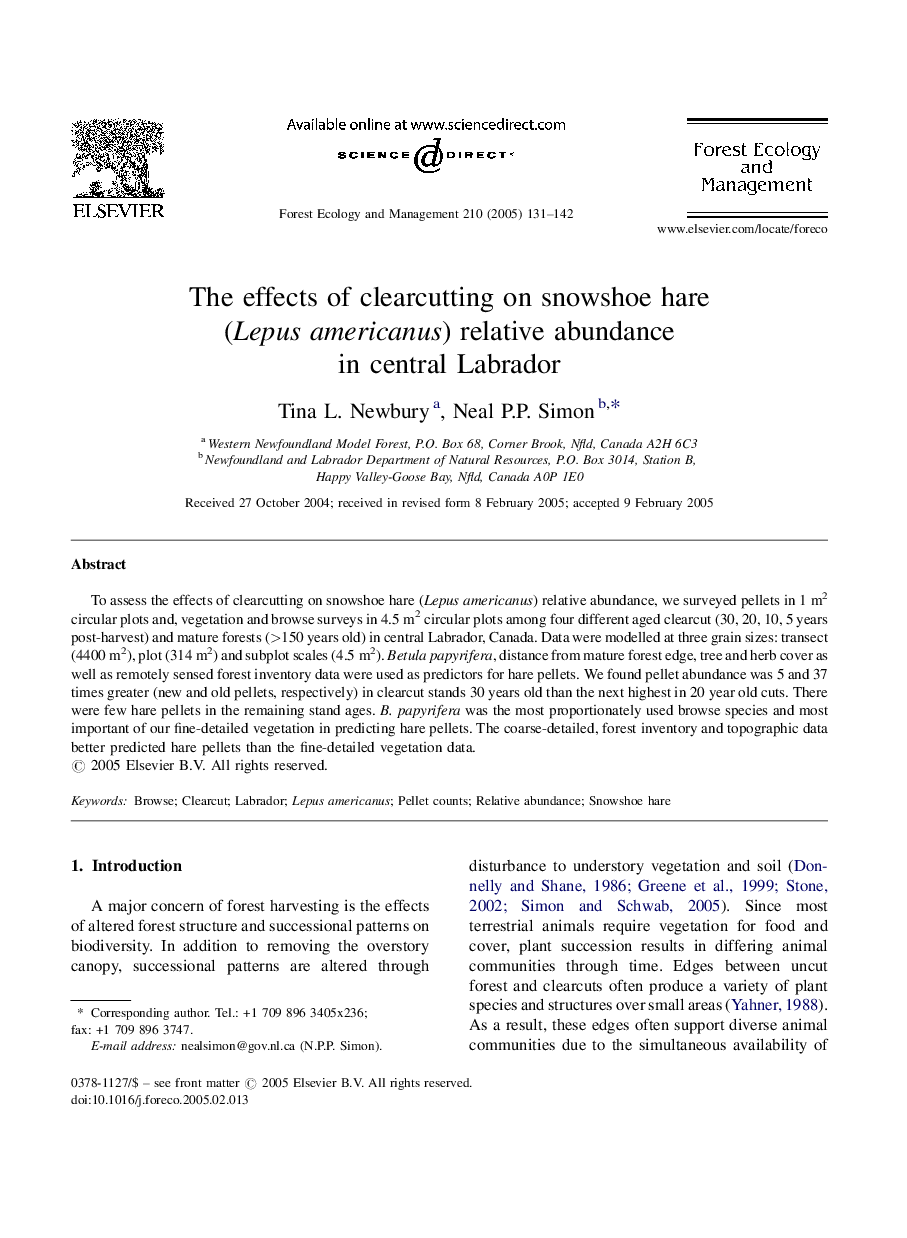| Article ID | Journal | Published Year | Pages | File Type |
|---|---|---|---|---|
| 9620360 | Forest Ecology and Management | 2005 | 12 Pages |
Abstract
To assess the effects of clearcutting on snowshoe hare (Lepus americanus) relative abundance, we surveyed pellets in 1Â m2 circular plots and, vegetation and browse surveys in 4.5Â m2 circular plots among four different aged clearcut (30, 20, 10, 5 years post-harvest) and mature forests (>150 years old) in central Labrador, Canada. Data were modelled at three grain sizes: transect (4400Â m2), plot (314Â m2) and subplot scales (4.5Â m2). Betula papyrifera, distance from mature forest edge, tree and herb cover as well as remotely sensed forest inventory data were used as predictors for hare pellets. We found pellet abundance was 5 and 37 times greater (new and old pellets, respectively) in clearcut stands 30 years old than the next highest in 20 year old cuts. There were few hare pellets in the remaining stand ages. B. papyrifera was the most proportionately used browse species and most important of our fine-detailed vegetation in predicting hare pellets. The coarse-detailed, forest inventory and topographic data better predicted hare pellets than the fine-detailed vegetation data.
Related Topics
Life Sciences
Agricultural and Biological Sciences
Ecology, Evolution, Behavior and Systematics
Authors
Tina L. Newbury, Neal P.P. Simon,
